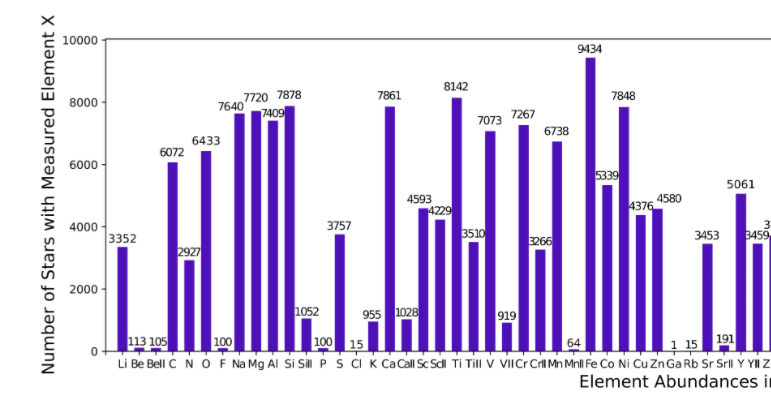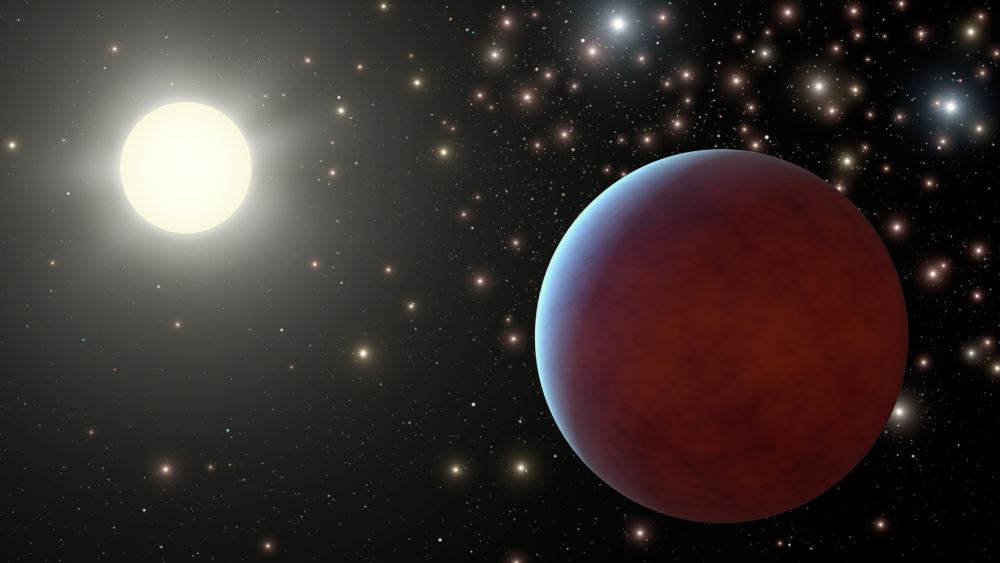The Search for Life can be a lot messier than it sounds. The three words make a nice, tidy title, but what it entails is extraordinarily difficult. How, in this vast galaxy, can we find life and the planets or moons that might host it? We’re barely at the point of either discovering or ruling out other life in our own Solar System.
Finding it somewhere else in the galaxy, even in our own interstellar neighbourhood, is a task so daunting it can be hard to comprehend.
So any time scientists think they’ve found something that can give them an edge in their near-impossible task, it deserves to be talked about.
A new study says that stars that contain phosphorus (P) may be more likely to host planets with life. This is based on exoplanet science so far, and our knowledge of chemistry and life. Phosphorus is a necessary chemical for life as far as we know, and planets tend to mimic the composition of their stars. So stars that have phosphorus likely spawned planets that have it, and by extension, a chance of hosting life.
The new paper is titled “The Influence of Stellar Phosphorus on Our Understanding of Exoplanets and Astrobiology.” The lead author is Dr. Natalie Hinkel, a planetary physicist at the Southwest Research Institute (SwRI.) The paper is published in The Astrophysical Journal Letters.
“My coauthor, Dr. Hilairy Hartnett, is an oceanographer and pointed out that phosphorus is vital for all life on Earth,” lead author Hinkel said in a press release. “It is essential for the creation of DNA, cell membranes, bones and teeth in people and animals, and even the sea’s microbiome of plankton.”

Astronomers use spectroscopy to determine the chemical elements present in a star. They can determine the relative abundance of elements like phosphorus. The chemical makeup of the star is a proxy for the chemical makeup of the planets orbiting it, since they all came from the same interstellar medium.
In astrophysics, any element heavier than hydrogen and helium is considered a metal. Astrophysicists refer to a star’s “metallicity” which means how much or how little of a star is composed of elements heavier than H and He. There’s some disagreement over the exact metallicity of the Sun, with different researchers arriving at totals of about 1.3% metal to 1.8% metal. But in any case, some of that percentage is phosphorus, and some data shows that the Sun has a higher than average P content.
Phosphorus is critical for life as we know it. In its orthophosphate form, phosphate forms the backbone of genetic molecules, and is the energy currency of nearly all metabolism. It’s part of what scientists refer to as CHNOPS (carbon, hydrogen, nitrogen, oxygen, phosphorus, and sulfur). Finding it is likely critical to finding life. In Earth’s oceans, phosphorus is a limiting nutrient, and it’s the least available of the six in CHNOPS. While CHNOPS are the most common elements in a typical cell, P is the least abundant. And though C, H, N, O, and S are all in the top ten most abundant elements in the Universe, P comes in at 17th.

Currently, we don’t have any way of measuring an exoplanet’s surface content. So a survey characterizing the chemical elements in exoplanets is a long way off. It’s also currently impossible to know if an exoplanet has exposed continental rock and surface water, two things we think are critical for the geochemical planetary cycles necessary for life. “When searching for exoplanets and trying to see whether they are habitable, it’s important that a planet be alive with active cycles, volcanoes and plate tectonics,” said lead author Hinkel.
By relying on stellar proxies containing phosphorus, researchers can take a potential short cut in their search for life. They can focus their efforts on planets surrounding stars that show phosphorus. At some future date, when we have the capability to study individual exoplanets more closely, astronomers will already know which ones are likely to contain the necessary phosphorus.
For this study, the researchers used the Hypatia catalog, which Hinkel developed as a publicly-available stellar database. Hypatia was created to “assess and compare the carbon, nitrogen, silicon, and phosphorus abundance ratios of nearby stars with those in average marine plankton, the Earth’s crust, as well as bulk silicate on Earth and Mars.” But the Hypatia catalog only contains information for 9,434 stars, and for some of those stars, measurements are incomplete.
“But there’s so little phosphorus stellar abundance data,” Hinkel said. “Phosphorus data exists for only about 1% of stars. That makes it really difficult to figure out any clear trends in between the stars, let alone the role of phosphorus in the evolution of an exoplanet.”

One of the barriers to studying and finding phosphorus in stars is that it’s not easily seen. When astronomers take spectroscopic observations of stars, they typically aren’t looking where they need to look to find it. That’s because it’s observed at the edge of the optical wavelengths of light and infrared light.
Our Sun has relatively plentiful phosphorus, and that means that Earth does, too. Life on Earth doesn’t require an enormous amount of phosphorus, but what it does require is essential. With that knowledge, Hinkel thinks it’s time that the astronomy community use a search for phosphorus in their search for life.
“Our Sun has relatively high phosphorus and Earth biology requires a small, but noticeable, amount of phosphorus,” Hinkel continued. “So, on rocky planets that form around host stars with less phosphorus, it’s likely that phosphorus will be unavailable for potential life on that planet’s surface. Therefore, we urge the stellar abundance community to make phosphorus observations a priority in future studies and telescope designs.”

The Hypatia catalog might contain an important lesson. The hunt for exoplanets that could support life tends to focus on planets in the habitable zone of their stars, which makes sense. As far as we know, no liquid water means no life. But if only 100 of the 9,434 stars in it contain phosphorus, that limiting factor should be used to refine the search. After all, no phosphorus might mean no life, too.
“Our Sun has relatively high P and Earth biology requires a small, but finite, amount of P,” the authors write in their paper. “On rocky planets that form around host stars with substantially less P, the strong partitioning of P into the core could rule out the potential for surface P and, consequently, for life on that planet’s surface. Therefore, we urge the stellar abundance community to make P observations a priority in future studies and telescope designs.”
The authors think that another small infrared space telescope in Earth orbit could do the trick. “Therefore, to improve our understanding of P and its role in planetary habitability, the community must develop instrumentation that can overcome these observational challenges,” they write. “For example, an infrared spectrograph in low-Earth orbit or in space would be able to access molecular P lines (such as PS) as well as elemental lines that are not attainable from the ground.”

The authors think there will probably need to be more cooperation between diffferent scientific disciplines to advance exoplanet science. The necessity of P for life to exist, coupled with the difficulty of detecting it in stars, make this clear. “In this Letter,” they write, “we have provided an example where an understanding from geobiology reveals that P, an element thus far underappreciated within astrophysics, is critically important for biology.”
“On the other hand, the geobiologist learns that P is incredibly difficult to measure, especially in context with other bioessential elements. Both parts of the interdisciplinary collaboration will need to work together to advance the thinking of the exoplanet community and get the data needed to trace biological systems on exoplanets.”
More:
- Press Release: SwRI SCIENTIST SEARCHES FOR STELLAR PHOSPHORUS TO FIND POTENTIALLY HABITABLE EXOPLANETS
- Research Letter: The Influence of Stellar Phosphorus on Our Understanding of Exoplanets and Astrobiology
- Universe Today: Worlds With Hydrogen in Their Atmospheres Could Be the Perfect Place to Search for Life

